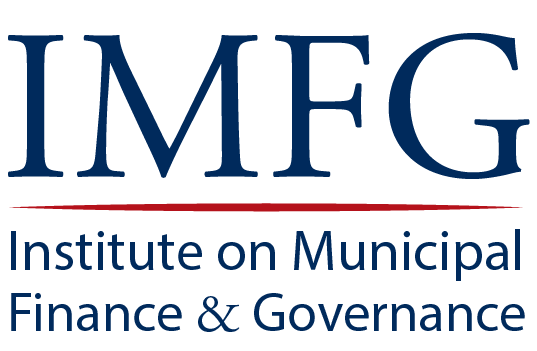Time for Toronto to Grow Beyond the Car
by Richard Florida
The biggest issue facing Toronto this election season is its over-dependence on the car. In addition to generating huge deadweight costs in terms of traffic and congestion, the city’s car dependence limits the region’s productivity and innovation, takes a dangerous toll on public safety, and contributes to growing economic divides.
The shift away from car dependence is especially critical in metropolitan areas that have reached a population of five to six million people, such as Toronto, Atlanta, Boston, Houston, Miami, and Washington, D.C. At this point, the sprawling growth model based on the car begins to break down. Cities that have been able to grow beyond this threshold, such as New York and London, depend heavily on alternative modes of transportation to keep people and the economy moving.
With a population that is expected to reach almost 10 million by 2041, the Greater Toronto and Hamilton Area (GTHA) requires a new growth model based on compact development, higher densities, expanded public transit, and increased walkability.
Across the GTHA, more than 600,000 people (almost 70 percent of commuters) take their cars to work each day. Just 25 percent take transit, only 5 percent walk to work, and a mere 1 percent use their bikes. By contrast, in many European cities, more than half of workers commute by transit. In Vienna, for example, nearly 66 percent of workers use transit to get to work. And in cities like Amsterdam, Barcelona, Copenhagen, and Paris, 40 to 50 percent of people commute by bike.
The car shapes politics and has created deepening political divides. Commuting by car – along with living in the suburbs – was one of the strongest predictors of support for the late Mayor Rob Ford, according to research by political scientist Zack Taylor. Similarly, Stanford University professor Clayton Nall found that investment in roads and the interstate highway system played a key role in America’s Red-Blue divide – and, by extension, the election of Donald Trump.
The region’s car dependence also contributes to economic divides. In 1970, two-thirds of Torontonians lived in middle-income neighbourhoods. By 2005, this number had dropped to less than 30 percent, according to research from David Hulchanski at the University of Toronto. The city and region have divided into clusters of concentrated advantage in and around downtown and along transit lines, and swaths of disadvantage in the suburbs and exurban periphery that remain disconnected from jobs, transit, and economic opportunity.
But the biggest cost is the deadly toll the car takes on public health and human life. In 2016, nearly 2,000 pedestrians and 1,000 cyclists in the city were hit by cars; 43 of these collisions resulted in fatalities. On average, a pedestrian in Toronto is hit every four or five hours and a cyclist every eight or nine. Toronto’s rate of pedestrian deaths is 1.6 per 100,000—worse than that of Boston, Buffalo, Chicago, Cleveland, Pittsburgh, Portland, San Francisco, Seattle, or Washington, D.C. Children and the elderly face the greatest risk of being struck and killed by a car. Across Canada, pedestrian fatalities increased by more than 10 percent between 2010 and 2016, while they decreased by more than 25 percent in European countries like Norway, Switzerland, and the Netherlands.
As the mayoral election approaches, the car will once again be a strong, perhaps defining, factor in Toronto’s voting behaviour. Some voters will put pressure on candidates to build roads and speed up traffic instead of making critical investments in transit, cycling infrastructure, and pedestrian safety. Toronto’s next mayor and council cannot succumb to these demands. If Toronto is to grow and prosper, the city and region must prioritize actions and investments that reduce car dependence.
To begin this shift, it’s time to make drivers pay the real price for the roads they use. This means levying a fee on drivers for their use of roads in the downtown core or congested highways. It also means revisiting Mayor Tory’s plan to impose tolls on the Don Valley Parkway and Gardiner Expressway, which was thwarted by suburban pressure on the provincial government.
The region must also shift its growth model toward taller, denser, more compact development, not just in and around the core, but along subway and transit routes. As cities across North America build and densify in their cores, swaths of land in older suburbs have remained untouched by construction for almost 50 years.
Toronto can no longer put cars and speed ahead of the safety of pedestrians, cyclists, and residents. To date, the city’s “Vision Zero” has done little to reduce the death toll. The city must emulate New York’s “slow zones” program by lowering speeds – especially on residential streets. It must also ensure safer streets by adding pedestrian crosswalks, red-light cameras, and photo radar cameras in school zones and known high-accident areas.
Toronto also desperately needs an integrated bike lane system to promote safe cycling. Current bike infrastructure is disjointed, making it difficult for bicycle commuters to reach work in a single, streamlined trip. Many of the city’s bike lanes are unprotected, meaning they are not separated from automobile traffic. Although the Toronto Bikeshare program is helping make the city more connected, the city still requires a hazard-free way to commute to and from work.
The car remains our most serious obstacle to growth and development. In her last book, Dark Age Ahead, Jane Jacobs identified the automobile as “the chief destroyer of American communities.” It is time for Toronto to heed that warning by building a safer, less divided, more equitable region for the next century.

Richard Florida is Director of Cities at the Martin Prosperity Institute in the University of Toronto’s Rotman School of Management. He is author of The Rise of the Creative Class (2002) and most recently of The New Urban Crisis (2017).
